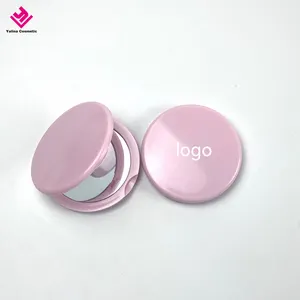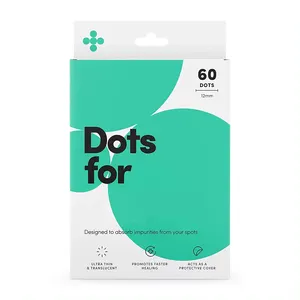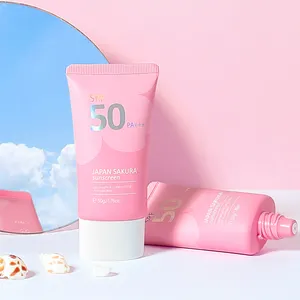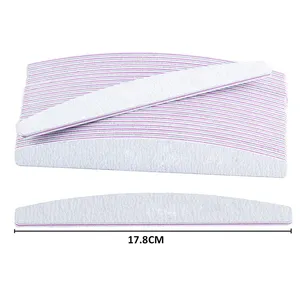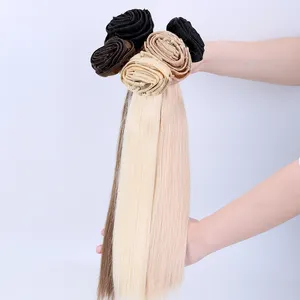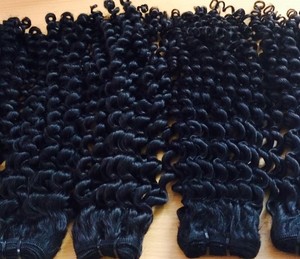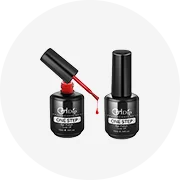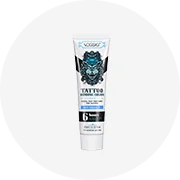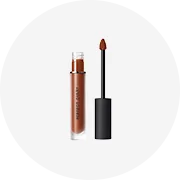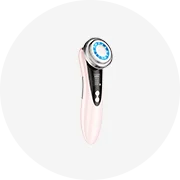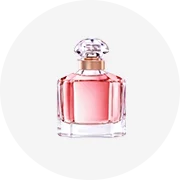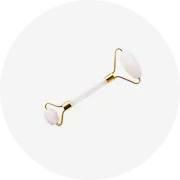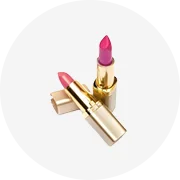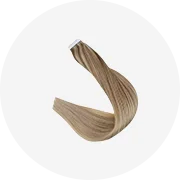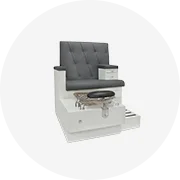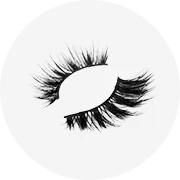Popular in your industry










































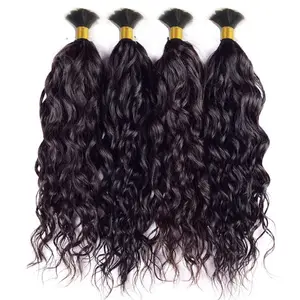
















Related Searches:


























































































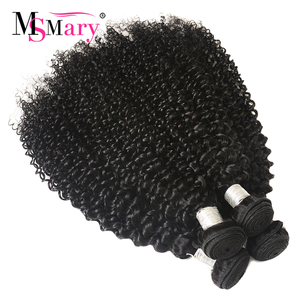























Top categories
About different types of human hair weaves
Embarking on a journey to elevate your hairstyle can lead you through a myriad of choices, but none quite as transformative as the human hair weave. From the glamour of Hollywood's golden era to the diverse beauty trends of today, hair weaves have become a cornerstone in fashion, offering versatility and a natural look that can be tailored to any style. In this exploration, we delve into the rich history, the various types, and the ultimate selection of human hair weaves that promise to redefine your personal style. Whether you're drawn to the untouched purity of virgin hair or the impeccable alignment of Remy weaves, understanding the nuances of each type is key to achieving the perfect blend of texture, color, and longevity. Join us as we uncover the top human hair weave types that go beyond natural, ensuring every style is within your reach.
The Evolution of Hair Weaves: A Brief History
Hair weaves, also known as hair integrations, have evolved significantly over time. Initially, they were exclusive accessories used by celebrities in the 1950s. It wasn't until the 1970s that hair weaves became more widespread, coinciding with the era's trend for longer, disco-style hair. Traditionally, hair weaves were crafted from human hair originating from various Asian countries, contributing to a diverse range of textures and styles. The historical significance of hair weaves is notable, as they have been used not only to enhance appearance by adding length, volume, and color but also as a fashion statement that has adapted to the changing trends over the decades. Despite their popularity, it's important to acknowledge that prolonged wear of certain styles, such as tight weaves, can lead to traction alopecia, a form of hair loss. This underscores the importance of proper installation and maintenance of hair weaves.
Understanding the Different Types of Human Hair Weaves

Human hair weaves come in a variety of textures and types, each offering a unique blend of characteristics to suit different preferences. Brazilian, Indian, Peruvian, and Malaysian hair are among the most sought-after types. Brazilian hair is known for its thickness and durability, making it a popular choice for those seeking a luxurious and natural look. Indian hair offers a thick, bouncy texture and is highly versatile, able to be styled in straight, wavy, or curly forms. Peruvian hair strikes a balance between the coarseness of Brazilian hair and the silkiness of Indian hair, resulting in a lightweight and free-flowing weave. Lastly, Malaysian hair is prized for its softness and luster, providing a full body that blends well with many hair textures.
Each type of weave hair is characterized by its specific texture and is available in various wave patterns, including straight, wavy, deep wave, or tight curly. Virgin hair weaves represent unprocessed hair, maintaining its natural state with intact cuticles all running in the same direction. This allows for greater versatility in styling, as it can be bleached, dyed, or processed similarly to one's own hair. Remy hair weaves, while potentially chemically treated for color or texture, still retain their cuticle alignment, which helps prevent tangling and ensures a smooth appearance.
Virgin Hair Weaves: The Pinnacle of Quality
Exploring the realm of hair weaves reveals a variety of options, among which virgin hair weaves stand out as a premium choice. These weaves are crafted from hair that has not been chemically treated, dyed, permed, or bleached. The integrity of the hair cuticles is maintained, and they are all aligned in the same direction. This meticulous preservation of the hair's natural state not only enhances its authentic appearance but also contributes to its durability and the ability to retain moisture, giving it a natural luster. Virgin hair weaves are sought after for their versatility in styling, as they can be altered with heat and color treatments just like one's natural hair, without compromising the weave's texture or strength. The natural origin of these weaves also means they blend seamlessly with the wearer's hair, offering a natural and undetectable finish. Ideal for those seeking a long-lasting and natural-looking hair enhancement, virgin hair weaves provide a reliable and adaptable solution for various styling needs.
Remy Hair Weaves: The Gold Standard for Alignment
Remy hair weaves are renowned for their superior quality due to the method of alignment. The term 'Remy' signifies that the hair cuticles are intact and uniformly aligned, with roots and tips flowing in the same direction, mimicking natural hair growth. This alignment is crucial as it imparts a natural luster and smoothness to the hair, making it less prone to tangling and easier to manage.
The preservation of the hair's cuticle and its unidirectional arrangement sets Remy weaves apart from other hair systems. It's this attention to detail that ensures the hair remains as silky and tangle-free as possible. While Remy hair weaves may require the same general care as one's own hair, their structure allows them to blend seamlessly with the wearer's natural hair, offering a natural and long-lasting appearance.
Remy hair weaves can be treated much like natural hair. They are receptive to heat styling and can be dyed to match the wearer's preference, retaining their style and color with greater longevity than non-Remy weaves. This versatility and durability contribute to their reputation as a premium choice in hair extensions.
Synthetic vs. Human Hair Weaves: A Comparison
When choosing a wig, understanding the distinction between synthetic and human hair is crucial. Human hair wigs are crafted from real hair, offering a natural look and feel, behaving similarly to one's own hair. On the other hand, synthetic wigs are made from artificial fibers, designed to mimic the appearance and texture of natural hair.
The perception that human hair wigs are superior simply because they consist of real hair is a common misconception. The quality of synthetic wigs can be so high that they are indistinguishable from human hair wigs. However, the differences between the two types of wigs are more nuanced and lie in their respective properties and care requirements.
Human hair wigs offer the versatility of styling options, closely resembling natural hair. They can be cut, colored, and styled as one would with their own hair. Synthetic wigs, while less versatile in styling, maintain their style and shape even after washing, requiring less maintenance.
In summary, the choice between synthetic and human hair wigs depends on personal preferences, lifestyle, and desired maintenance level. Each type has its own set of advantages that cater to different needs, whether it's the natural versatility of human hair or the ease of care that synthetic wigs provide.
Selecting the Right Weave for Your Style

Selecting the right hair extensions, or weaves, is pivotal for complementing your natural hair while achieving the desired style. For individuals with fine hair, lightweight extensions such as tape-in and I-tip are recommended to prevent strain on delicate strands. Medium hair types have the versatility to accommodate a variety of extensions, allowing for experimentation with tape-in, I-tip, or K-tip extensions to tailor to personal style and lifestyle needs.
Those with coarse hair can opt for more durable methods like sew-in wefts or fusion techniques, which provide a secure hold and blend seamlessly with the thicker hair texture. It's also crucial for individuals with healthy hair to choose extensions that maintain their hair's condition, such as semi-permanent methods that minimize damage. Conversely, for damaged hair, it's important to select gentle methods that won't exacerbate the condition, steering clear of aggressive techniques that could lead to further weakening.
Ultimately, the key to selecting the right weave lies in understanding your hair type and choosing extensions that align with it. Consulting with a hairstyling professional can aid in making an informed decision that ensures both the health and the aesthetic appeal of your hair are preserved.
The Role of Texture and Color in Weave Selection
When selecting hair weaves, the harmony between the weave's texture and your natural hair is crucial for a seamless appearance. For those with naturally curly or permed hair, choosing a weave that mimics these curls will ensure a natural blend. Conversely, straight weaves are more suitable for chemically relaxed hair. The color of the weave is equally important; it should either match or closely complement your natural hair color. While dramatic color changes might require dyeing, finding a weave in your natural hue avoids additional hair treatments. This careful consideration of texture and color plays a significant role in achieving a look that enhances your natural beauty without the need for constant styling or maintenance.
Installation Techniques for Different Weave Types
Exploring various weave installation methods is crucial for achieving the desired hair appearance. The sew-in technique, widely adopted, hinges on the cornrow pattern. Proper spacing of cornrows is essential to avoid a lumpy look and to maintain scalp access for hygiene. Typically, sew-ins are adjusted every 6-8 weeks, though fast-growing hair may require more frequent maintenance.
Quick glue weaves offer a cost-effective and temporary styling option, suitable for about 3-4 weeks of wear. However, they limit the ability to wash the hair, which can lead to the formation of residue when attempting to clean. The removal process demands patience and expertise to prevent damage to the natural hair.
Micro-link fusion, a premium method, involves attaching extensions individually, which can last up to six months with proper care. This method, requiring no heat or glue, uses small beads or locks to attach extensions, allowing for natural hair movement. However, it's not recommended for thin hair as the bonds may be visible and can slip if not installed correctly.
Clip-in extensions are ideal for temporary enhancement for special events, offering the flexibility of easy removal. While they can be self-applied, incorrect installation may lead to the extensions falling out. They are less suitable for thin hair due to potential visibility and weight issues.
Maintaining Your Weave: Tips and Best Practices

Proper maintenance is crucial for keeping your weave looking its best. Start by washing your weave and natural hair every one to two weeks, using lukewarm water and a sulfate-free shampoo. Gently massage the shampoo onto your scalp and in between the braids, then rinse thoroughly without scrubbing vigorously to avoid tangling.
Detangling is an essential step in weave care. Always begin from the ends and work your way up to the roots to prevent damage. It's best to detangle while the hair is damp to minimize breakage.
Drying your hair completely is important to prevent any mildew-like smell. Whether you choose to blow dry or air dry, ensure that no moisture remains in the weave braids.
When dealing with itchiness, avoid scratching with sharp objects. Instead, opt for a scalp soother or tea tree oil for relief. This helps maintain the integrity of the scalp and prevents irritation.
Lastly, to reduce friction that can lead to hair fall, wrap your hair in a silk scarf or use a satin pillowcase while sleeping. This helps to keep the weave smooth and reduces the chances of tangling and damage.
Alibaba.com: Your One-Stop Shop for Quality Hair Weaves
Exploring the diverse offerings of hair weaves, Alibaba.com stands out as a marketplace that caters to a variety of preferences. The platform showcases an array of hair weave patterns, including Body Wave, Natural Wave, Deep Wave, Loose Wave, Silky Straight, and Jerry Curly. These selections cater to different styling needs, allowing individuals to choose extensions that align with their desired look.
Alibaba.com's collection extends beyond patterns to include a spectrum of colors and lengths, ensuring that there is a match for everyone's unique taste and style. The versatility of these weaves means they can be transformed through curling, straightening, and even coloring, making them suitable for a wide range of occasions.
The platform takes pride in presenting a transparent shopping experience, with professional photographs that accurately represent the products customers will receive. This attention to detail reflects the commitment to customer satisfaction and the effort to maintain a trustworthy environment for purchasing hair weaves.
Conclusion
In the realm of personal style, the right hair weave acts as a canvas for self-expression, blending seamlessly with your natural hair to create a look that's as unique as you are. Throughout this article, we've navigated the evolution of hair weaves, from their historical roots to the modern-day marvels of Brazilian, Indian, Peruvian, and Malaysian textures. We've highlighted the unparalleled quality of virgin hair weaves and the unmatched cuticle alignment of Remy hair, both setting the standard for a natural and enduring hair enhancement. The comparison between synthetic and human hair weaves has illuminated the importance of choosing based on lifestyle and maintenance preferences. Moreover, we've provided insights into selecting the right weave for your hair type and the significance of texture and color in achieving a cohesive look. Installation techniques have been demystified, and maintenance best practices have been outlined to ensure the longevity of your chosen weave. Alibaba.com emerges as a trusted marketplace, offering a plethora of options to meet your styling needs. In conclusion, whether you seek a subtle enhancement or a complete transformation, the journey to finding the perfect hair weave is an intimate and creative process that promises to infuse confidence and elegance into every strand.

